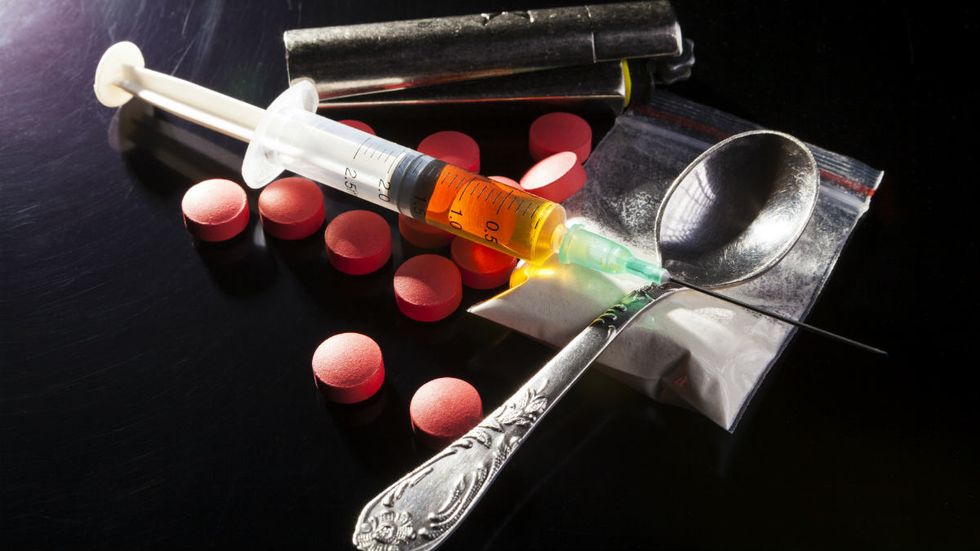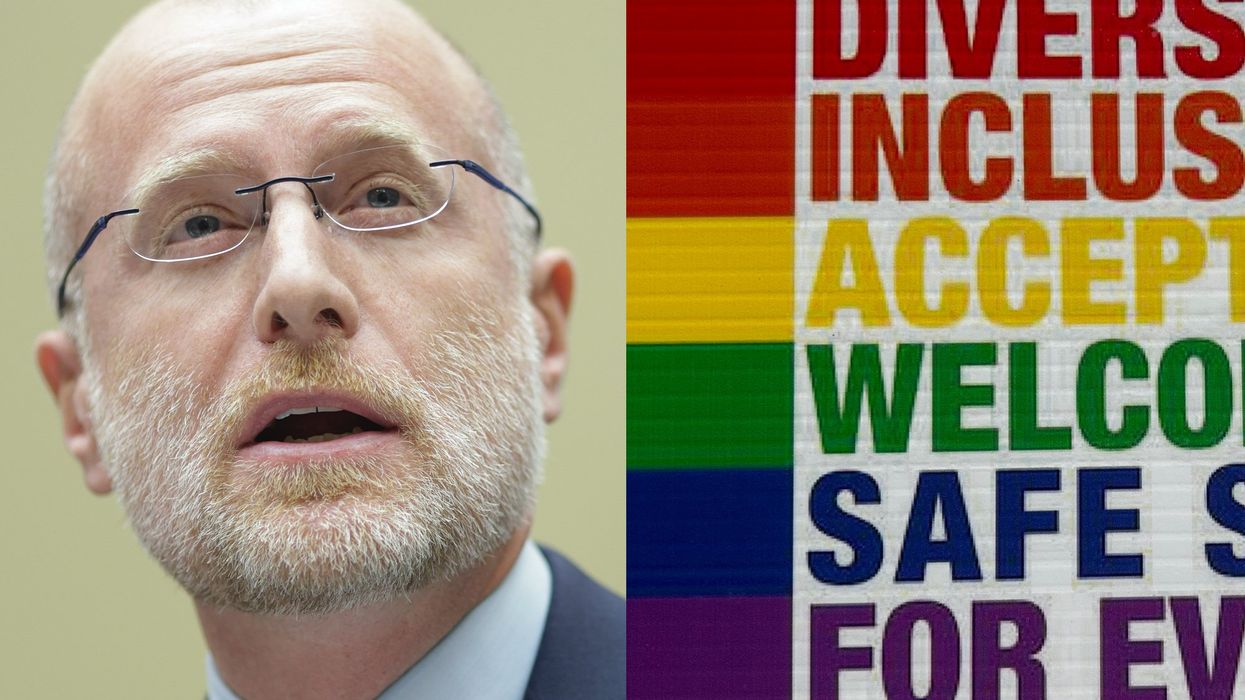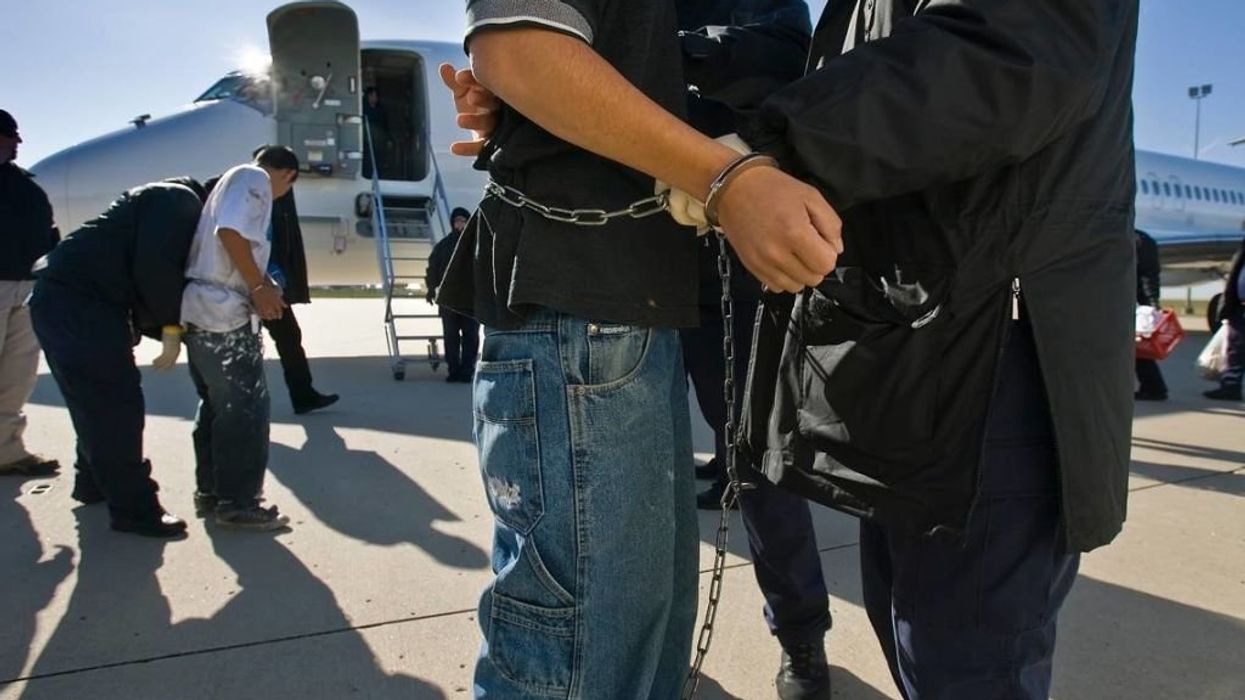
© 2025 Blaze Media LLC. All rights reserved.
(The first two parts of this series on the opioid crisis are here and here.)
The two political parties should merge together and swap out the symbols of an elephant and donkey in favor of an image of an arsonist dressed up as a firefighter. Nowhere is this more evident than with the hypocritical talk about opioids and the enormous problems of health care and border security – issues where both parties are the problem, not the solution.
Washington and state governments are clamoring to deal with “the opioid crisis.” But they fail to define what the crisis is, the cause, the trends, why it exploded just a few years ago, and who is at fault. They just want to throw billions of dollars at big-government programs supposedly designed to treat the symptoms rather than addressing the core problem both with prescriptions and illicit drugs, which fuel and exacerbate the existing cultural problems inherent in our society. The reason why they don’t want to discuss the real culprits is obvious: They are open borders and Medicaid, two favored policies of both parties. Worse, some are discussing increasing Medicaid spending as the solution and continue to block every effort to combat drug smuggling, sanctuary cities, and criminal aliens, which would limit the supply and profitability of the drug-running while greatly increasing the price of street drugs.
Heroin and fentanyl are the problem, not prescription drugs
There is no longer a national emergency caused by prescription opioids. As we noted earlier this month, incontrovertible data shows that prescriptions have plummeted, overdoses from prescriptions are going down in most states, and illicit drug overdoses are skyrocketing, mainly due to fentanyl and fentanyl-laced heroin. As the acting director of the CDC, Anne Schuchat, told an Energy and Commerce subcommittee on March 21, “CDC’s data indicate that these [recent] increases were primarily driven by synthetic opioids, including illicitly manufactured fentanyl (IMF)." She observed that “fentanyl was involved in more than half of opioid overdose deaths and that more than half of deaths testing positive for fentanyl and fentanyl analogs also tested positive for cocaine, methamphetamine, or heroin.”
Only about one-quarter of the 64,000 drug overdose deaths reported in 2016 were due in part to prescription opioids. The trajectory remains flat and is going down in some states. Dr. John Lilly, a Missouri based-physician, recently published an article in the Journal of American Physicians and Surgeons proving how at most 16,800 of the deaths had prescription opioids in their toxicology reports. Even among the minority of overdose deaths reported as prescription-related in 2016, there is reason to believe a lot of this could be fueled by illicit drugs. Michael Schatman, adjunct clinical assistant professor, Tufts School of Medicine, Boston, observed that the “average number of drugs detected in toxicology was six,” but as long as one prescription drug was detected in the deceased person’s blood at the time of death, “it goes down as a ‘prescription opioid death.’” And a huge percentage of those who died from opioids dangerously mixed their usage with alcohol and sleeping pills. This is why just 14 percent of those who sought treatment for addiction in New Hampshire last year did so for prescription opiate addiction.
In an article that appeared in the April issue of the American Journal of Public Health, CDC researchers admitted that previous government data inaccurately conflated prescription drug deaths with illicit street drug deaths. They conceded that although “opioid-involved deaths were at their greatest levels ever in 2016 … Prescription opioid-involved deaths estimated more conservatively have leveled off since 2012.”
It’s not just opioids; where are these illicit drugs coming from?
The supply of, use of, and overdose on cocaine and methamphetamine have risen sharply over the exact same time. These drugs are not opioid-based. In West Virginia, overdoses from meth spiked 400 percent, while cocaine overdoses tripled. Some of those overdoses are because dealers lace these drugs with fentanyl. A May 2017 special DEA report on West Virginia noted that the increase in supply came from Mexican drug cartels that have “gang affiliated” distributers in Columbus and Detroit bringing the drugs into West Virginia.
The number of cocaine overdoses in Ohio nearly tripled from 2013 to 2016. In Pennsylvania, cocaine-related overdose deaths increased 33 percent from 2015 to 2016 after a 40 percent increase from 2014 to 2015. Incidentally, a joint report from the University of Pittsburgh and the DEA suggested that local law enforcement sources indicated drug traffickers selling heroin “are increasingly switching to cocaine distribution due to the fear of law enforcement prosecution for deaths resulting from heroin and fentanyl sales." So why would anybody say that going after the supply doesn’t work?
Clearly, if there is a national emergency, it is being caused by illicit drugs. We have a recent heroin/fentanyl problem, mixed with other drugs, not a general opioid crisis – certainly not caused by legitimately prescribed opioids.
Government confusing and misusing the data
Production and prescription of legal opioids are already restricted to levels not seen since 2002. So before we focus on more big-government treatment programs and regulations, let’s at least have a national debate over the far more serious issue. Fentanyl is not being over-prescribed by doctors; it is being smuggled into this country from Mexico and China and is 100 times more potent than morphine. It is practically a hazmat issue and represents the true national emergency.
Amazingly, the CDC issued a report earlier this month noting that emergency room visits due to drug overdoses increased 30 percent last year, but it failed to divulge the nature of the drug overdoses. The report detailed a number of geographical and demographic factors and analyzed treatment programs as a health care issue. But it never identified the most important detail: How many of the overdoses were prescription-related and how many were from illicit drugs? I asked the CDC’s press office about the missing information, and the agency responded, “We cannot separate out prescription opioids from heroin in this current analysis because we sought to include all opioids regardless of type.”
Gee, how do we fight an epidemic we fail to even identify?
Josh Bloom has exposed the efforts of the CDC to cover up the real source of the drug overdose crisis in great detail. It’s a perfect — and easy — scapegoat to go after doctors and the overwhelming number of people who are in pain from surgeries and properly use their prescriptions, rather than clamping down on drug traffickers and transnational cartels.
Government fighting the wrong problems
Policy-makers are focused solely on clamping down on prescriptions when the regulations are already tighter than ever before. Not only are most of the fatalities due to illicit drugs, but many of the prescription drug deaths were not due to legally obtained prescriptions. A study from the Substance Abuse and Mental Health Administration shows that only 22 percent of those who misused prescription drugs received them from their personal doctors. About half received them from a friend or a relative, and as we will discuss in a later article, much of this is due to the over-consumption of Medicaid patients driven by “free” stuff. According to a recent DEA report on West Virginia, the worst drug overdose state, 61 percent of fatalities in 2015 were from illicit pharmaceutical drugs trafficked by drug dealers the same way they peddle heroin.
In Maine, another overdose hotspot in recent years, a report prepared by the state attorney general showed that in most cases of those who died from overdoses of prescription drugs, the drugs were not prescribed to the decedent.
And while a number of those addicted to prescription painkillers have gone on to overdose on heroin, by far the biggest increase in heroin overdoses has been those aged 18 to 25, which suggests this is more of a supply-side availability problem for otherwise healthy young people mired in the culture of “buzz-seeking” or suffering from a history of emotional problems rather than those older with chronic illness and pain simply getting addicted to legitimate prescriptions and then expanding their addiction to heroin.
Are we really going to allow government to practice medicine and limit the supply of morphine in hospitals because of an illicit drug trade? The number of people who have become addicted to prescription drugs even for long-term treatments is relatively low, particularly among those with no prior history of drug abuse or depression, anxiety, and mental health conditions. Yet, now there is a limited supply and severe restrictions even on short-term or in-patient treatments! Yes, that’s right – flood our streets with WMD-grade drugs but then take them out of the hospitals. That will solve the problem!
Putting aside how we got here, any further effort to stigmatize and restrict prescription pain killers will result in too many people suffering and will, in fact, drive more people into the dirt-cheap illicit drug market, without an effort to address the supply side and the border issue. It’s the worst possible mix of policy prescriptions.
#mc_embed_signup{background:#fff; clear:left; font:14px}
/* Add your own MailChimp form style overrides in your site stylesheet or in this style block.
We recommend moving this block and the preceding CSS link to the HEAD of your HTML file. */
Want to leave a tip?
We answer to you. Help keep our content free of advertisers and big tech censorship by leaving a tip today.
Want to join the conversation?
Already a subscriber?
Blaze Podcast Host
Daniel Horowitz is the host of “Conservative Review with Daniel Horowitz” and a senior editor for Blaze News.
RMConservative
Daniel Horowitz
Blaze Podcast Host
Daniel Horowitz is the host of “Conservative Review with Daniel Horowitz” and a senior editor for Blaze News.
@RMConservative →more stories
Sign up for the Blaze newsletter
By signing up, you agree to our Privacy Policy and Terms of Use, and agree to receive content that may sometimes include advertisements. You may opt out at any time.
© 2025 Blaze Media LLC. All rights reserved.
Get the stories that matter most delivered directly to your inbox.
By signing up, you agree to our Privacy Policy and Terms of Use, and agree to receive content that may sometimes include advertisements. You may opt out at any time.



